
Fresh herbs are amazing. They bring a certain complexity and vibrance that you don’t find with the dried version, while also being something you at grow at home yourself.
The catch is working out how to use them. Fresh herbs aren’t as intuitive as dried ones. You need to be careful about when you add them to your recipe, to make sure you don’t ruin the flavors. You also need to think about how to preserve them.
Today, we’re interested in fresh sage. This aromatic herb comes from the same family as mint and has some familiar refreshing flavor notes. It’s also an unusual herb, as the leaves are fuzzy and feel a little like velvet. The herb is also easy to grow at home and can even be propagated from cuttings.
The fuzziness of sage leaves means it is most often used dried rather than fresh. Yet, it’s still worth learning how to use fresh sage. Why not get the most out of the herb if you have it?
Possible uses for sage include both sweet and savory applications, like sage ice cream, using sage in stock, making sage compound butter, and candying sage leaves. Sage brown butter recipes are common as well. These highlight the flavors of sage and allow it to be the base for many recipes.
How To Use Fresh Sage (13 Exciting Ways!)

Stuff A Chicken
Dried sage is most often used to flavor savory meals, yet fresh sage has its place too. It may even be a better choice in some situations.
One of the simplest approaches is to include fresh sage in your stuffing. Here, you’ll often be chopping the sage and combining it with other ingredients, like breadcrumbs, onion, lemon zest, and the like.
Some people even skip the stuffing entirely and just add fresh herbs directly into the chicken cavity. Doing so infuses the chicken with plenty of flavor, without requiring much effort. You could use a combination of herbs here or just sage on its own.
Sage Compound Butter
Compound butter is one of the easiest ways to use fresh herbs. All you’re doing is softening the butter enough that it can be whipped, then mixing in chopped herbs.
Once the butter hardens again, you have a flavorful ingredient that you can use any time butter is called for. For example, you might use sage compound butter with roast vegetables or when you’re cooking steak.
You can make this treat with just sage and butter or create something much more complex. For example, one recipe includes rosemary, honey, and sea salt along with the sage. Another uses sage and roasted garlic.
Scrambled Eggs With Sage
The flavor of fresh sage works beautifully with the creaminess of scrambled eggs. This is also an easy recipe, as you’re just adding the fresh sage once the eggs have started cooking. You just need to take care to ensure you don’t burn the sage in the process.
Of course, if fresh sage goes well with scrambled eggs, it’s also going to work with most other egg dishes. For example, you can make Sage and Ham Baked Eggs in ramekins, which are a brilliant way to start your day. Why not experiment by adding fresh chopped sage to some of your egg recipes? You might be surprised by how well the idea works.
Homemade Stock
Homemade stock is healthier and tastier than broth from the store. It’s also versatile, as you can use whichever herbs you have on hand. Fresh sage is a fantastic ingredient here, especially if you combine it with other herbs, like rosemary and thyme.
You can even use fresh herbs in stock recipes that call for dried herbs. Be sure to use three tablespoons of the fresh herb for each tablespoon of dried in the recipe. That change in quantity is essential because dried herbs have a more intense flavor than fresh herbs.
This stock could then be used as the base of many soups, gravies, or sauces. You can even cook ingredients like quinoa in stock rather than water. Doing so infuses them with extra flavor, making your meal that much more delicious.
Try Sage Ice Cream

The flavors of sage make it a natural fit for savory dishes, like the ones from above. That said, sage does work with some sweet dishes as well – you just need to plan the recipe well. The trick is often to infuse other ingredients with the flavor of sage, rather than using the herb directly.
For example, when making ice cream, you can cook milk with fresh sage leaves. This gives the milk distinct sage tones that find their way into the ice cream.
Indeed, sage works surprisingly well in ice cream. It can even stand alone as the main flavor ingredient. Or, you might try something a little more complex like Brown Butter Orange Sage Ice Cream or Chocolate Sage Ice Cream. The simple and complex versions are all stunning, especially if you make the ice cream yourself.
Sage Brown Butter
Sage brown butter is a popular sauce that is simply incredible on pasta. Brown butter is itself simply made by gently heating unsalted butter until it has a slight brown color.
To make sage brown butter, you simply need to add chopped sage after the butter is melted and ahs been on the heat for a few minutes. You can add other flavoring ingredients too, including garlic, salt, and pepper.
Such extra ingredients add to the complexity of your sauce, but don’t go overboard. The sauce will be best with just one or two strong aromatics. Otherwise, some interesting flavor notes may get masked.
Sage Pesto
Pesto traditionally relies on pine nuts, basil, garlic, and olive oil. Yet, there are countless variations – including sage pesto. As the name suggests, this recipe uses sage instead of basil as the herb.
Many versions also ditch the pine nuts and use walnuts instead. The walnuts are a much better complement to the flavor of pine nuts. It’s also nice to try something different.
If you find fresh sage too intense, you could try using a combination of sage and parsley. Doing so balances out the flavor profile, while still giving you plenty of delicious sage notes.
Sage Infused Oil
Here, you’re simply covering chopped sage leaves with oil and storing the combination in a bottle or jar. You can also heat the sage leaves and oil together, which is a faster way to infuse the oil with flavor.
The oil takes on a distinct sage flavor and becomes excellent in a variety of recipes. You can even simply sauté with it. The oil also helps the sage last longer, which is perfect if you have a lot on hand.
Some care is needed with this approach, as fresh herbs can go moldy in oil. To reduce the risk, make sure your sage leaves are clean and completely dry before adding them to the oil. You can also keep the oil in the fridge rather than a cupboard for added safety.
Olive oil is the most popular oil to use here, especially as it is suitable for cooking and for cosmetic purposes. You can experiment with other types of oil too as long as they’re suitable for your intended use.
Homemade Sausages
Dried herbs are often used when making sausages, yet they’re not your only option. You can actually make sausages using fresh herbs instead – including fresh sage.
Fresh herbs even have some advantages, as they’re vibrant and offer a more complex flavor than you’ll ever find with dried herbs. The approach is especially good if you have a lot of fresh sage growing in your garden.
This Simple Sage Sausage Recipe is a great place to get started. It uses ground pork as the base ingredient, which is then combined with sage, thyme, red pepper flakes, garlic, and seasonings. The finished sausage has a nice balance of sage and thyme flavors.
Make Fried Sage Leaves

These sage leaves are simply fried in a skillet with oil and then allowed to dry. They’re surprisingly delicious as a snack, often with plenty of salt to complement them.
The leaves are fantastic if you want a low calorie snack (and they’re much tastier than kale chips!). You can also use fried sage leaves as a garnish, even if your recipe doesn’t use sage as an ingredient. You might use the leaves whole here or crumble them up first.
Look for the freshest leaves possible for this approach, ideally ones you’ve picked yourself. Doing so will give you the best possible result.
Candied Sage
Like many herbs, sage tastes surprisingly good after it has been candied. The idea is simple. You just need to paint your leaves with an egg wash, cover them with sugar, and allow them to dry.
This approach provides plenty of sweetness from the sugar, while the complex and savory sage notes shine through as well. You could easily eat these leaves on their own or use them as a garnish for sweet dishes.
In Cocktails
Herbs are a fun way to make your cocktails more complex and unusual, without being overly complicated. The idea is surprisingly versatile too.
One approach is to muddle sage leaves as you are making the cocktail, much like you would muddle mint leaves when making a mojito. This is a great starting point, as you get some sage flavor into your cocktail, without it being too intense.
You can also make sage simple syrup. Here, you’re infusing your syrup with fresh sage, typically by preparing the simple syrup and then adding sage leaves while it is still simmering. Once the combo has simmered for a few minutes, you can remove it from heat and allow the sage leaves to keep infusing for half an hour.
You might even use sage simple syrup and muddled sage within the same cocktail. This is best if you want the flavor of sage to dominate your recipe. Beyond this, you could infuse sage into a spirit (like vodka) or use it only as a garnish.
Sage’s distinct flavor means it works incredibly well in some cocktails and poorly in others. You’ll need to experiment to find a good match. Or, you could look for recipes that are already designed for sage.
Dry It
Finally, if you’re growing sage and have a large amount of it, you may want to dry some of the leaves. After all, there aren’t that many uses for fresh sage. Most recipes rely on dried sage instead
Air drying is the easiest approach. Here, you need to gather between 5 and 10 sage stalks into bundles. These should be of equal length. The ends can then be tied using a rubber band or string.
Once tied, the sage can be hung upside down in a ventilated area. Warmth is good, but the bundles should be kept away from direct sunlight and moisture. Some people place a paper bag with holes over the sage before hanging it. While this isn’t essential, it does help keep the dust off.
Alternatively, you can dry herbs using the oven or a dehydrator. These methods are faster, although they do require a little more prep work.
5 Delicious Recipes Using Fresh Sage

Pineapple And Sage Gimlet
This Pineapple and Sage Gimlet is a wonderful way to start using sage in cocktails. The cocktail is a riff on the gimlet, meaning it uses gin, lime juice, and simple syrup as the base ingredients.
There’s then pineapple flavoring from pineapple juice and pineapple chunks, plus some fresh sage leaves. Pineapple and sage combine well with each other and the gin, giving you a cocktail that’s complex, yet also easy to drink.
Veal Saltimbocca
Then there’s this Veal Saltimbocca recipe, which offers a delicious savory way to use your sage. The dish itself is Italian and the name translates to “jumps in your mouth”. It’s a tricky dish to get right, yet it can be truly delicious when made well.
This featured recipe provides important information for getting the best possible saltimbocca, including a discussion of whether it should be constricted flat or rolled up. There’s also information about the type of starch you use and where to place your sage leaves.
While the recipe is meant to be made with veal, there are plenty of chicken-based versions as well. These are perfect if you don’t like the flavor of veal or have ethical concerns about using it.
Fried Sage Salsa Verde
This Fried Sage Salsa Verde is a unique and delicious ingredient, one that can be drizzled on top of countless meals. The recipe’s power comes from frying fresh sage leaves in hot oil (an approach we talked about earlier). Once fried, the sage can be cooled and crumbled.
The crumbled sage is then scattered into the rest of the ingredients, which include olive oil, salt, parsley, shallots, and red wine vinegar. This collection of ingredients creates a complex and flavorful dish sauce you’re certain to love.
Wild Honey And Sage Ice Cream
This Wild Honey and Sage Ice Cream truly is a delight. It’s also a simple recipe, as you just need heavy cream, whole milk, sage, egg yolks, vanilla, salt, and honey.
The inclusion of honey adds just a touch of complexity to the ice cream and nicely complements the sage. The exact flavor profile would also change depending on the type of honey used.
That said, honey isn’t essential in the recipe. Valerie, the recipe creator, mentions that you can use sugar instead. Doing so would still give you a delicious treat. In fact, the flavor of sage might shine through even more in the sugar-based version.
Charred Rosemary And Sage Salted Caramel Sauce
This Charred Rosemary and Sage Salted Caramel Sauce is one of the most stunning recipes I’ve seen. The use of charred rosemary and sage provides a complexity that you won’t find otherwise.
The recipe is surprisingly simple too, there are only six ingredients, including the herbs, heavy cream, corn syrup, granulated sugar, and a little salt. Corn syrup may be the most unexpected, yet it is also important, as this reduces the risk of crystallization and makes it much easier to caramelize sugar.
Frequently Asked Questions
What Does Sage Taste Like?
Sage has an interesting and unusual flavor. It’s sometimes described as being woodsy and earthy, with slight peppery notes, yet no description quite does it justice. As with many herbs, sage is distinct. It has a flavor all of its own that brings many dishes to life.
How Long Does Fresh Sage Last?
Fresh sage should last roughly a week in the fridge if you store it carefully. To do so, it’s best to remove the leaves from their stems and wrap them in a paper towel. Storing the leaves in oil can make them last up to three weeks, although you’ll need to watch out for mold.
Can Too Much Sage Be Harmful?
Like most herbs, sage is safe when used in typical food amounts. This is even true if you’re using it in your meals most days. However, sage might be unsafe if you’re consuming large amounts of it for a long time, especially if you’re doing so medicinally. This issue is related to a chemical called thujone, which is found in sage. While consuming small amounts of thujone isn’t an issue, consuming large amounts regularly could be.
Can You Eat Raw Sage Leaves?
Sage can be safely eaten raw, although this isn’t a common practice. That’s because a little heat is needed to fully release the herb’s aroma. The main exception is if you’re making candied sage, as this process doesn’t involve cooking at all.
Is Fresh Sage Better Than Dried?
Dried sage is more commonly used in cooking, partly because it doesn’t have the fuzziness found with the fresh leaves. The dried version is also more pungent and has a concentrated flavor profile. However, fresh sage is still better in some situations, especially when you want a complex flavor profile.
As with most herbs, fresh sage isn’t better than dried (or vice versa). Instead, the two types have different advantages and are used at different times.



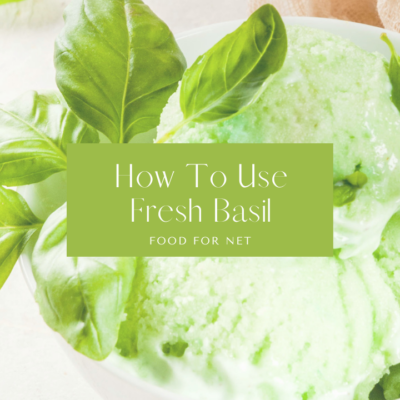
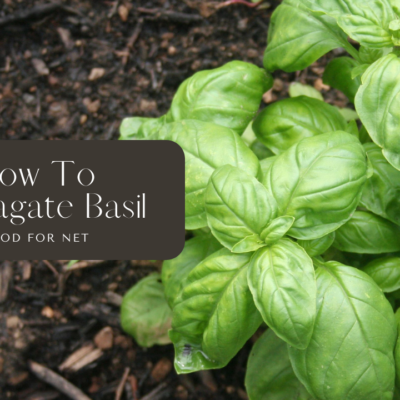
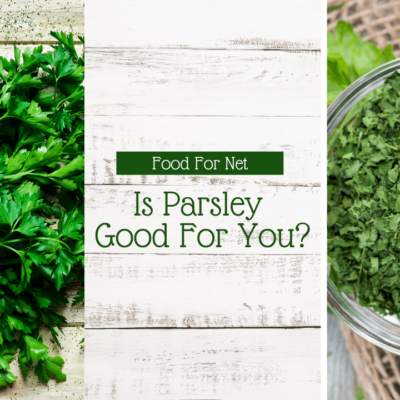
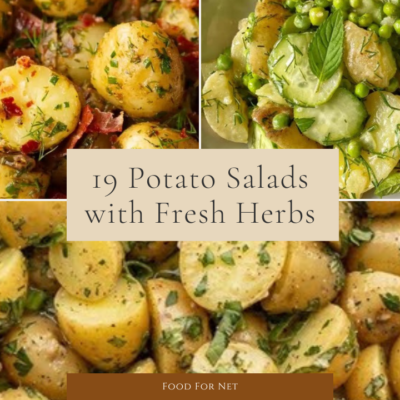



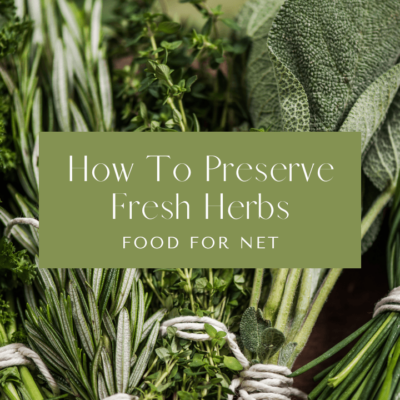
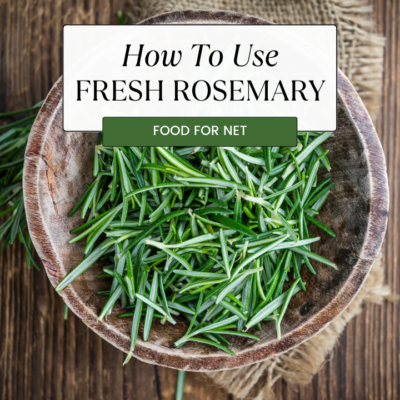



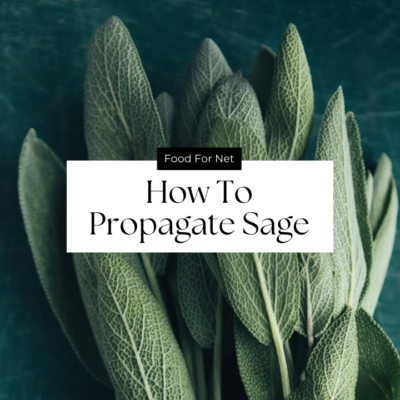

 What To Serve With Mac And Cheese
What To Serve With Mac And Cheese